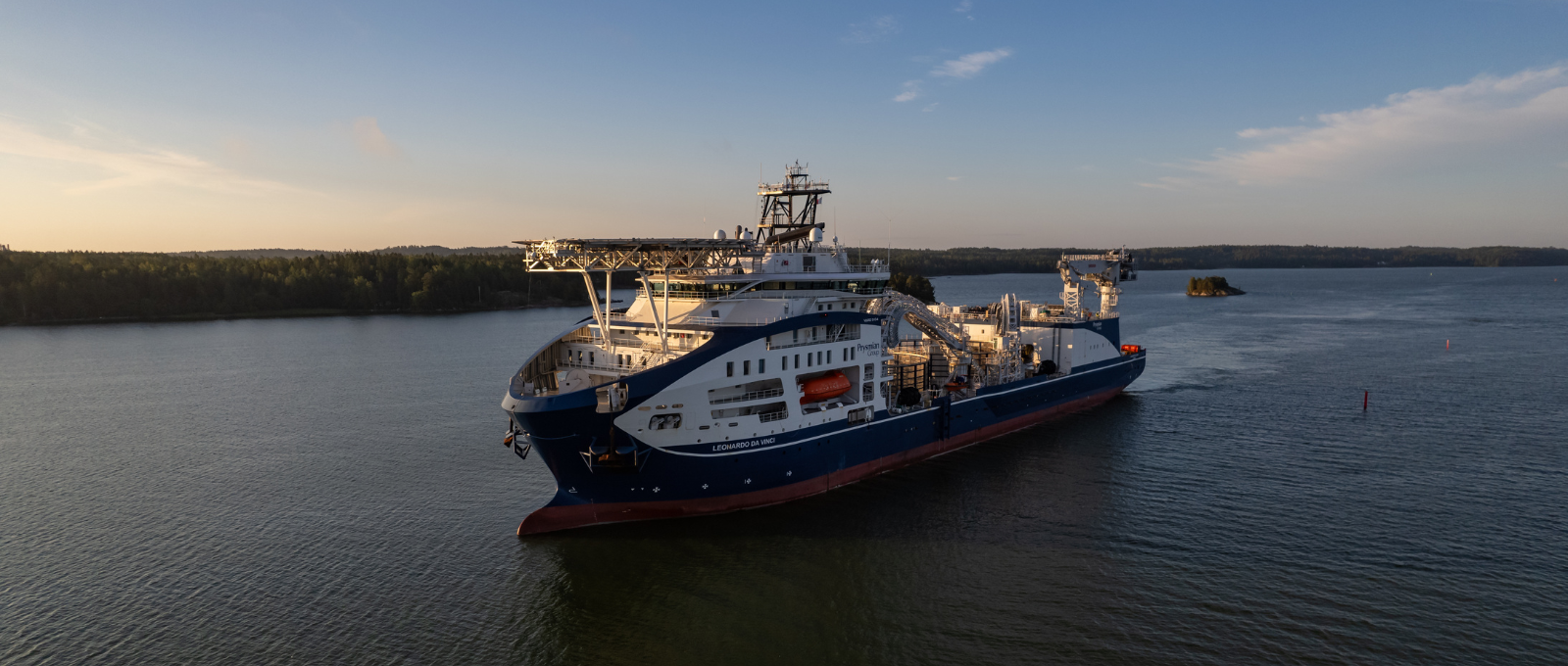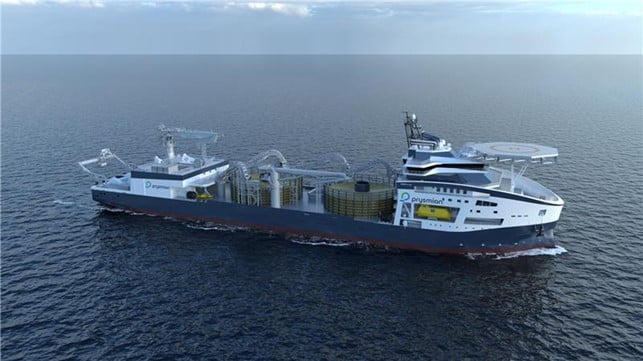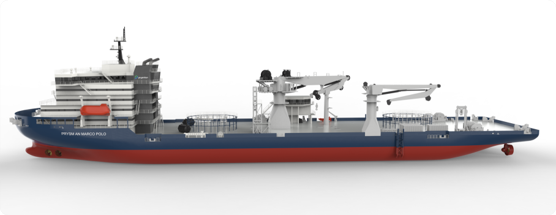Prysmian has decided to name its latest vessels Prysmian Alessandro Volta, and Prysmian Marco Polo. The names draw inspiration from Italian innovation heritage are in line with the naming of previous vessels, such as Leonardo da Vinci. The vessels will join Prysmian’s existing fleet starting from 2025 to reach a total of 8 operating vessels, more than any other peer worldwide, reflecting Prysmian’s leadership position in the global submarine cable market.
Prysmian celebrates the Italian contribution to global innovation heritage with its new vessels


Prysmian Alessandro Volta
The new flagship cable laying vessels, an evolution of the existing Prysmian Leonardo Da Vinci and Prysmian Monna Lisa “class” vessels, will be named Prysmian Alessandro Volta, honoring the most famous Italian physicist and chemist who invented the electric battery and made significant contributions to the study of electricity. This choice marks the strong link with Prysmian core business, which is producing and installing power cable to provide electrical connection among countries. Volta, was born in Como (Italy), then a part of the Dutchy of Milan and went onto to become an esteemed professor in the city of Pavia – sharing deep ties as a symbol of Lombardy, the region in which Prysmian was founded and continues to have its HQ and global R&D base.

With a length of approximately 193 m and a breadth of about 34 m, the new vessel will be equipped with advanced cable installation solutions, such as three carousels for a total capacity of 19,500 tonnes, positioning itself among the highest cable loading capacity vessels in the market and enabling a reduced transportation time from the factory to the site, for an overall improved project efficiency. A bollard pull in excess of 200 tonnes will allow the vessel to perform complex installation operations of simultaneous cable lay and burial (up to 4 cables) with a variety of ploughs, for an unrivalled optimisation of offshore operations. The vessel will be equipped with state-of-the-art DP3 positioning and seakeeping systems and will be operational by beginning of 2027. As for Prysmian Leonardo da Vinci and Prysmian Monna Lisa, the new vessel will be built by the VARD Group (a subsidiary of the Fincantieri Group), one of the world leaders in the design and construction of specialised vessels for the offshore market

Prysmian Marco Polo
For the other vessel, which will be the evolution of the Prysmian Ulisse “class” vessel, Prysmian decided to go for Prysmian Marco Polo, the worldwide recognized merchant and explorer known for his travels to Asia and his detailed accounts of his journeys, in honor of the multiple sails that the barge will do across oceans and sea, all around the world – reflecting Prysmian’s global leadership and spirit of exploration where others dare to reach. In 2024 Prysmian set a world record in sail trial for deep sea cable installation.

With a length of approximately 167 m and a breadth of about 40 m, this vessel will be equipped by two carousels (one of them split in two concentric sections) for a total cable loading capacity of at least 8,000 tons. The state-of-the art DP2 positioning, and seakeeping systems and an eight-point mooring system will enable the ship to meet its operating requirements specialized in shallow-water cable laying and burial installation, even in harsh environmental conditions. The vessel will be operational by the first half of 2025.
Both vessels will have outstanding green credentials: they will be equipped with high-voltage shore connection systems to power them with clean energy during loading operations, diesel generators suitable for biodiesel blends and battery hybrid systems only for the deep-water-vessel, due to its specific activity.
“At Prysmian, we are deeply rooted in our Italian DNA and sail’s spirit, which drives our attitude to explore, innovate and excel in our business, wherever we sail.”

Alberto Boffelli
COO Transmission BU, Prysmian
Marco Polo and Alessandro Volta are both prominent figures in Italian history and are globally recognized for their results in their respective area of interest. They both represent the spirit of Italian innovation and exploration in their respective fields. Marco Polo’s explorations expanded geographical knowledge, while Alessandro Volta’s scientific discoveries laid the groundwork for modern electrical engineering. The naming is in line with the current active vessels in Prysmian’s fleet - Leonardo da Vinci and Monna Lisa, to stress the strong connection with the Italian Renaissance artist worldwide recognized and his art masterpiece.




